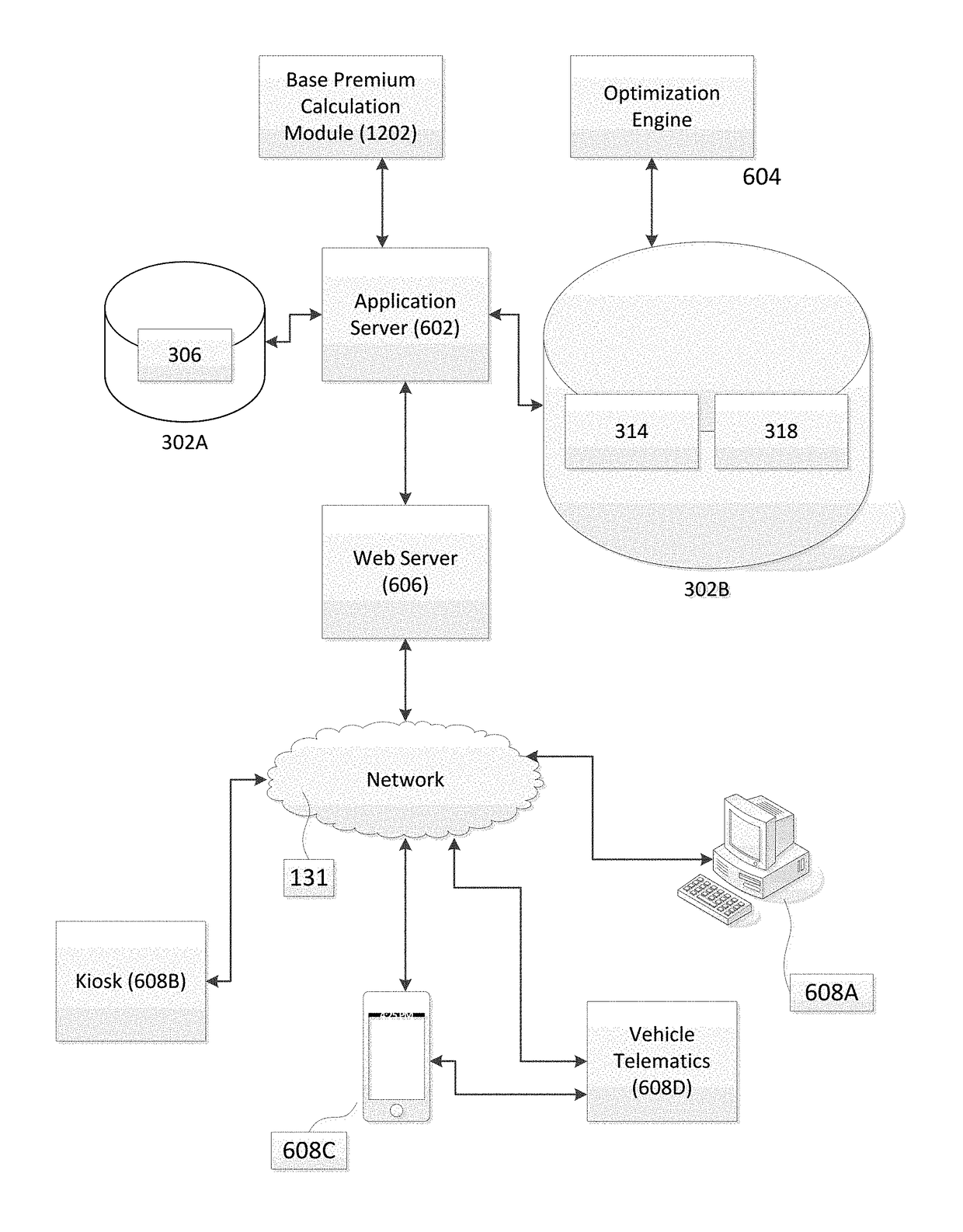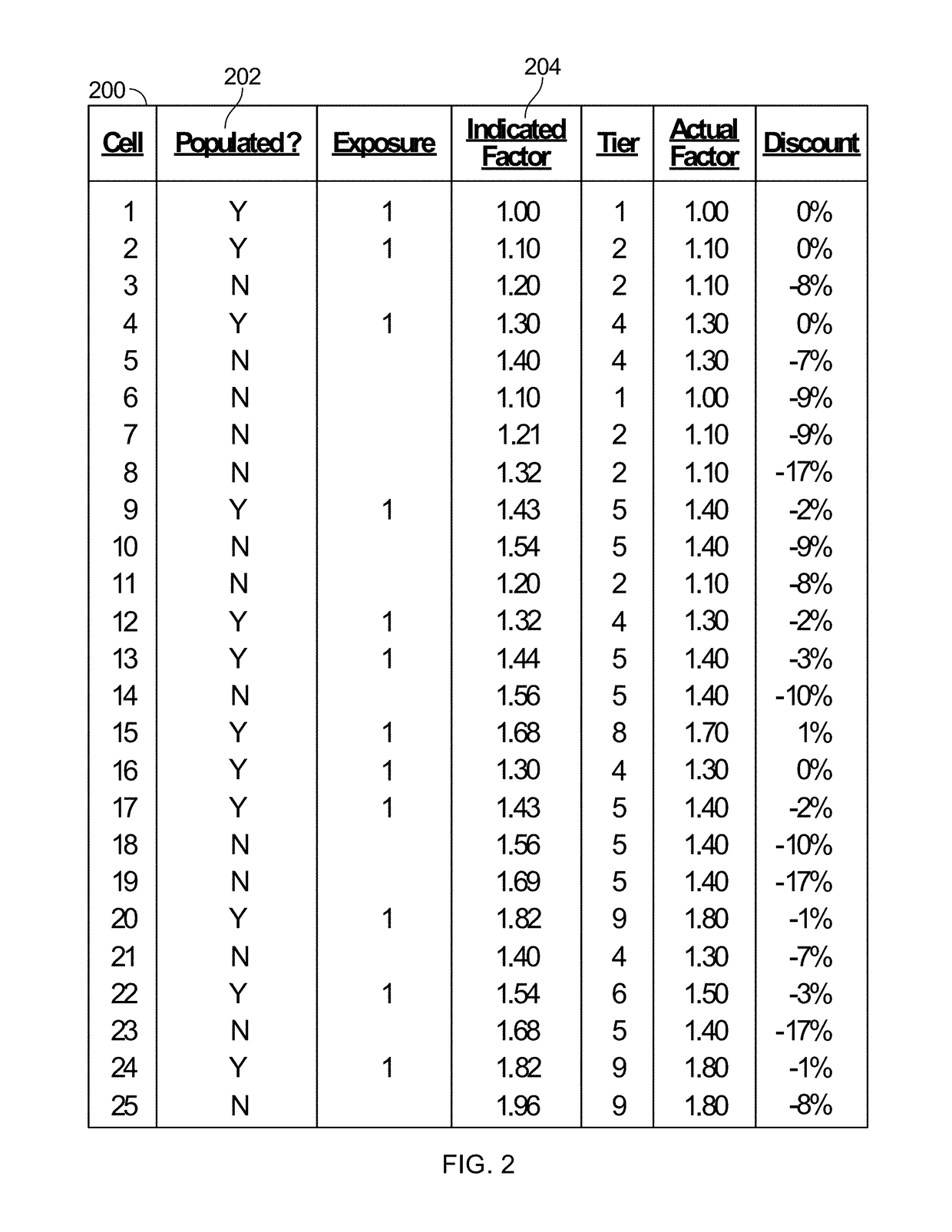Pre-calculated insurance premiums with wildcarding
a technology of insurance premiums and precalculated premiums, applied in the field of precalculated insurance premiums with wildcarding, can solve the problems of requiring substantial coordination with one or more systems and processors, requiring substantial calculations, and requiring minor numerical errors in the results
- Summary
- Abstract
- Description
- Claims
- Application Information
AI Technical Summary
Benefits of technology
Problems solved by technology
Method used
Image
Examples
Embodiment Construction
[0028]In accordance with various aspects of the disclosure, methods, apparatuses, and systems are disclosed for more efficiently updating the technological systems that calculate insurance rates / premiums for an insurance policy (e.g., auto insurance policy).
[0029]In contrast to prior art systems, in some embodiments of the disclosure, an engine-less rating system is disclosed where possible combinations of insurance factors are pre-calculated and recorded in unstructured and / or semi-structured data formats, such as a table (e.g., a lookup table, hash table, tree, or other comparable data structure). In some embodiments in accordance with various aspects of the disclosure, the system may be configured such that no arithmetic calculations are performed outside of the engine-less rating module in calculating a premium amount for an insurance policy. Alternatively, in a semi-engine-less approach, the system may be configured to reduce the number of arithmetic calculations that are perfo...
PUM
 Login to View More
Login to View More Abstract
Description
Claims
Application Information
 Login to View More
Login to View More - R&D
- Intellectual Property
- Life Sciences
- Materials
- Tech Scout
- Unparalleled Data Quality
- Higher Quality Content
- 60% Fewer Hallucinations
Browse by: Latest US Patents, China's latest patents, Technical Efficacy Thesaurus, Application Domain, Technology Topic, Popular Technical Reports.
© 2025 PatSnap. All rights reserved.Legal|Privacy policy|Modern Slavery Act Transparency Statement|Sitemap|About US| Contact US: help@patsnap.com



